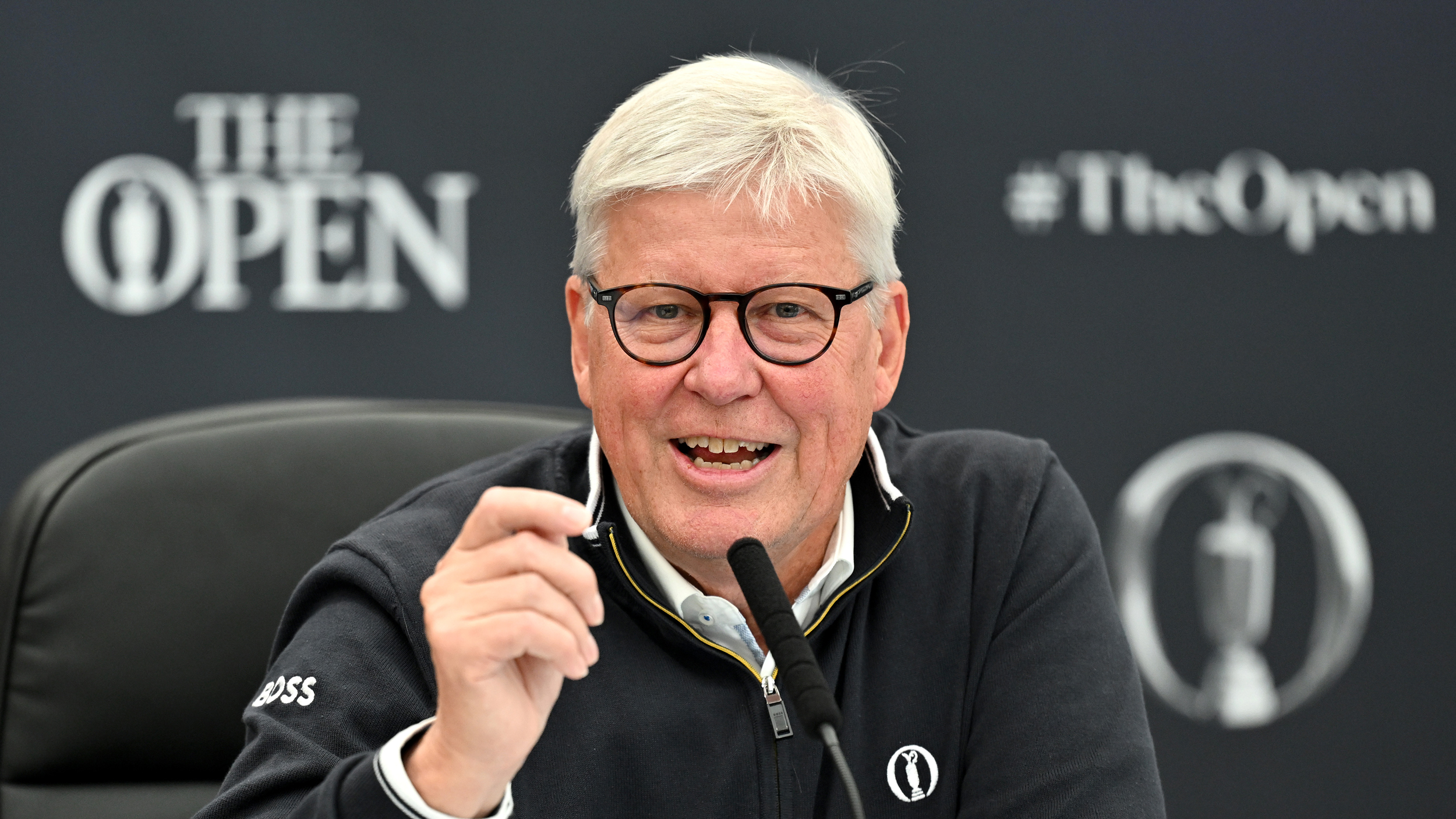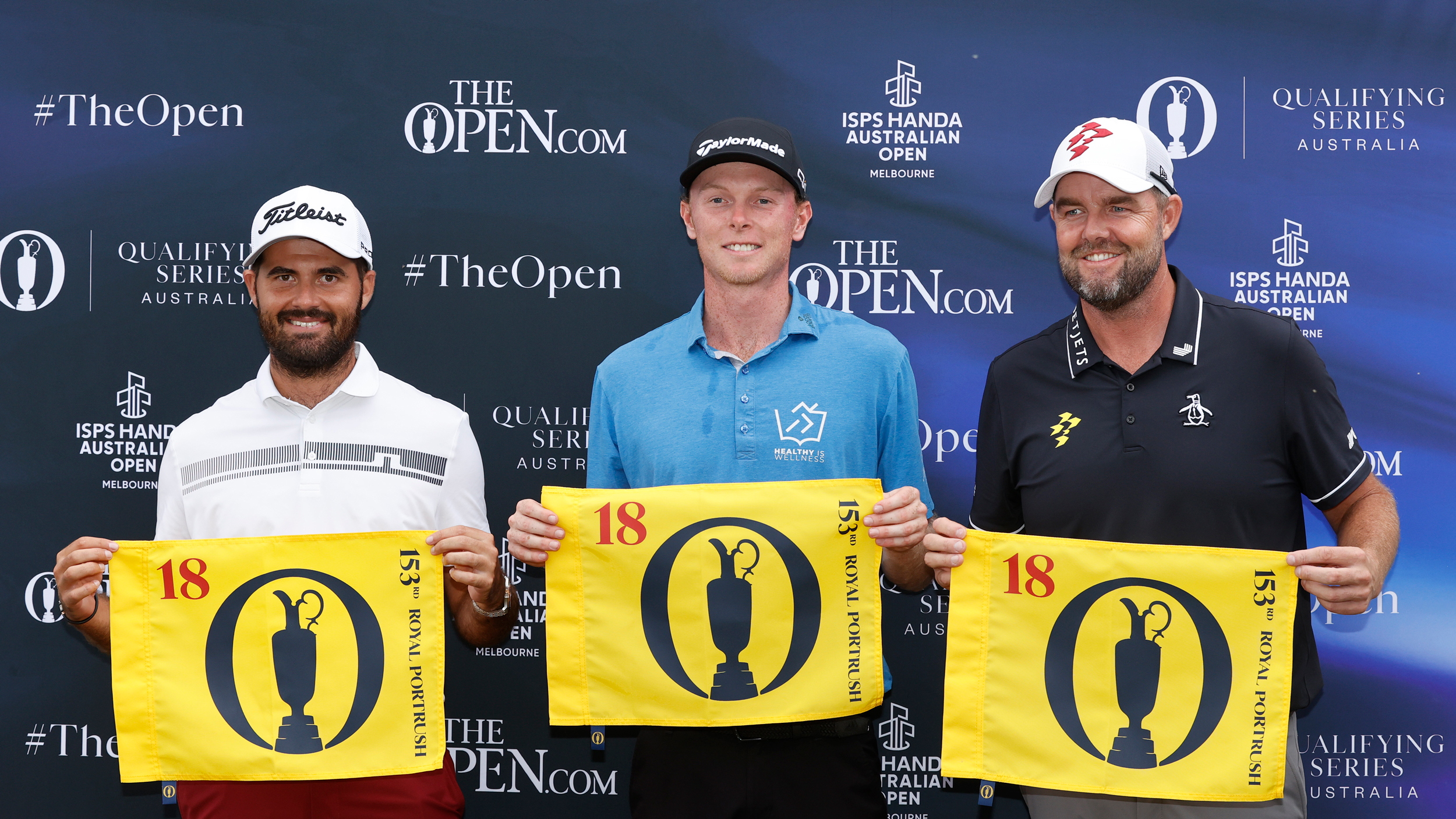7 Key Takeaways From Martin Slumbers' Final Open Press Conference
The R&A's CEO addressed several key issues for the final time in his role before he steps down later this year


Martin Slumbers is due to bring his nine-year tenure as the R&A's CEO to an end later this year following a final Open Championship at Royal Troon and an AIG Women's Open at St Andrews' Old Course.
He will be replaced by Mark Darbon in November, the man who left his position as CEO of Premiership Rugby club, Northampton Saints and who has also been a senior member of the team leading the London Organizing Committee for the Olympic and Paralympic Games in 2012.
But before Slumbers' exit, the 64-year-old shared some early parting words with journalists in Scotland on Wednesday as the R&A prepared itself for the 152nd Open.
Speaking to the assembled media at Troon, Slumbers wished to discuss several key topics - including participation and prize money - while facing questions on how to ensure the game remains viable given the various challenges it faces and also whether a familiar course may host an Open again soon.
Here are all of the key takeaways from Slumbers' final Open Championship press conference.
GOLF IS A PYRAMID

Slumbers began his press conference by pointing out that golf is currently "riding on the crest of a wave" at the moment having emerged from the Covid pandemic as one of the only sports to have grown.
He stated that golf is benefitting from a surge in participation and "more than 100 million people experience the game in one form or another around the world."
Get the Golf Monthly Newsletter
Subscribe to the Golf Monthly newsletter to stay up to date with all the latest tour news, equipment news, reviews, head-to-heads and buyer’s guides from our team of experienced experts.
But the R&A's CEO argued that to maintain such success, a sustainable business model must be created in the long term - with The Open becoming the first and only men's Major not to increase its total prize purse this year.
Slumbers said: "As you know, I've expressed concern in recent years about financial sustainability in the men's professional game. If we take a wider perspective on the game for a second, golf is in many ways riding on the crest of a wave. The golf industry is benefitting from a surge in participation, and more and more people are experiencing golf in all its forms.

"The latest participation figures for 2023 showed that in the countries we're responsible for, there were 62.3 million people playing golf, which is a rise of 1.1 million on the previous year.
"These are very encouraging figures, but we have to maintain this momentum. To do that, we must have a sustainable business model in the long term. If you look at golf as a pyramid, however strong the pyramid is at the top, it can only be sustained in the long term if the pyramid is equally strong at the base.
"We see that as our responsibility, and that is why we invest all of the proceeds from The Open back into the sport. We have to be careful to do that in such a way as to ensure that the recreational game is thriving and that the most talented players have a pathway to the top of the game so the professional game of tomorrow flourishes. We can't do that if we neglect the base of the pyramid."
ONCE-IN-A-GENERATION OPPORTUNITY

Following on from the above, Slumbers acknowledged his optimism for the future of the sport and said: "If we can achieve a sustainable business model and really engage in parts of the world where the growth opportunities are emerging, then there is a golden, perhaps once in a generation, opportunity to elevate our sport and make it a more popular participation sport than it has ever been, and I'm convinced that that is achievable."
TOO MANY PLAYERS IN THE OPEN FIELD?

Normally, The Open Championship would feature a 156-man field. But, due to changes to Final Qualifying this year, the number - as of Wednesday morning - was two more than that. It is something Slumbers admitted the R&A will look at moving forward.
He said: "The target is 156, but it's not the first time we've been above 156. The real reason we slipped up to 158 is we have tried really hard to improve the opportunities in final qualifying, to have more spots available.
"We made a commitment quite a while ago that we would give a minimum of 16 spots to FQ. That was on an assumption about who would come in through exemptions and which of our past champions will play.
"In prior years we probably would have cut the 16 FQs down to 13, but we didn't. We stayed with our commitment, and that's why we're just slightly over. But we don't want to do this as a matter of course. 156 is the number. It's a long enough day on Thursday and Friday, as all of you know, and it's going to be a little bit longer."
DRIVERS COULD FACE ROLLBACK NEXT

With calls to make golf more sustainable as a sport, the R&A and USGA ultimately chose to implement a golf ball rollback for everyone last December, coming into effect towards the end of the decade.
On Wednesday, Slumbers faced questions on the R&A's decision to only pursue the golf ball and not the driver, too, as had originally been stated.
He explained: "We originally, if you remember, put out an area of interest that said we're interested in the ball and we're interested in the driver. The feedback from the industry - and I'm not going to go any more specific than the industry - was, okay, but only choose one. We decided that the ball was the most effective way to be able to move forward.
"As you quite correctly noted in the notice and comment, the decision that was made at the end of last year, we said we are still very interested in the driver. We believe that there is work that needs to be done to make the driver less forgiving for the best players in the world. We just don't know how to do it yet. So we'll work with the industry.
"The most important thing between now and -- is 2028. We work with the industry, deeply conscious of the change that we're putting into the system, and all our focus will be on getting the golf ball 2028-2030, but rest assured we've not lost sight of the driver. We'll be continuing to think about that and engaging with some bright people to think about how to do that."
LIV PATHWAY TO THE OPEN

Bryson DeChambeau (pictured) has previously suggested a direct pathway to the Majors for LIV golfers could be looked at in order to help solve part of the disagreement in men's professional golf at the moment.
USGA CEO Mike Whan admitted a direct route into the US Open is being "seriously considered" by his organization, but Slumbers pointed to The Open's qualifiying series as a perfectly reasonable method for LIV players to take already.
He said: "We decided the year after last year's event that we wanted to ensure that there was sufficient enough opportunities for all players, whichever tour they're playing on, to get into The Open.
"We used our Open qualifying series. We picked events that were available for all players. We used the Asian Tour, and we used final qualifying to create those opportunities.
"I think we have 18 players from LIV in the field, and I think we've got all the best players in the world. And that's what we do want to have, all the best players in the world coming through. So I think we've created those opportunities.
"Will that evolve in the coming years? I think that depends on how the game evolves. But we will continue to want the best players in the world to be able to get into The Open in an appropriate way."
"BIG-TIME SPORT NEEDS BIG-TIME CROWDS"

Crowds watch the 18th green at the 2016 Open at Royal Troon
Crowd numbers at The Open have continued to rise steadily in recent years, something Slumbers is very proud of and hopes to see continue in years to come.
He said: "I think I said in this room a few years ago I think big-time sport needs big-time crowds. It surprised me when I came here in 2016, 170,000 people in a week around this golf course. It sort of felt empty. Grandstands weren't full very often. The image wasn't that great. The weather wasn't terribly good on Friday, was it?
"But I think big-time sport is so much better when there's lots of crowds and there's lots of noise and there's lots of enthusiasm. Yeah, I mean, every year since then we've hit a record during my time, and I'm sure my successor will be looking to do exactly the same."
FUTURE OPEN VENUES AND THE KNOCK-ON EFFECTS
Muirfield has welcomed The Open 16 times in total but not since 2013. All but one of the eight other venues on the active rota have hosted since then - Royal Lytham & St Annes (2012).
Slumbers confirmed Muirfield remains in the R&A's plans moving forward, but it may come at a price for the Renaissance Club and its hosting of the Scottish Open.
Asked about The Open heading back to Gullane - east of Edinburgh - Slumbers said: "Absolutely, we're going back to Muirfield. It's a brilliant golf course. I'll have a little conversation with Mr. Kinnings about maybe moving the Scottish Open from the Renaissance."
A follow-up question was posed about potential Open site, Portmarnock in Ireland.
Slumbers said: "What we've said about Portmarnock is the club has asked the Irish government for support in putting together a business case to stage our championships on the links, and we are fully supportive of the club doing that, and we are actively engaged in making those assessments. But no decisions have been made because we don't even know if it's possible."

Jonny Leighfield is our Staff News Writer who joined Golf Monthly just in time for the 2023 Solheim Cup and Ryder Cup. He graduated from the University of Brighton with a degree in Sport Journalism in 2017 and spent almost five years as the sole sports reporter at his local newspaper. During his time with Golf Monthly, Jonny has interviewed several stars of the game, including Robert MacIntyre, Ian Poulter, Lee Westwood, and Joaquin Niemann. An improving golfer himself, Jonny enjoys learning as much about the game as he can and recently reached his Handicap goal of 18 for the first time. He attended both the 150th and 151st Open Championships and dreams of attending The Masters one day.
-
 Why Machrihanish Golf Club Needs To Be On Every Golfer's Bucket List
Why Machrihanish Golf Club Needs To Be On Every Golfer's Bucket ListThe rugged, natural and historic Machrihanish Golf Club is a spectacular Old Tom Morris design that is the epitome of pure links golf
By Elliott Heath
-
 Reports: Wesley Bryan Suspended By PGA Tour After Playing In LIV Golf Duels
Reports: Wesley Bryan Suspended By PGA Tour After Playing In LIV Golf DuelsThe 2017 RBC Heritage winner is said to have been suspended by the PGA Tour after teeing it up in the recent LIV Golf creator event in Miami
By Elliott Heath
-
 'I've Just Changed My Life' - Reformed Convict Books First Major Start After Winning New Zealand Open
'I've Just Changed My Life' - Reformed Convict Books First Major Start After Winning New Zealand OpenFormer Australian bike-gang member and ex-prisoner, Ryan Peake continued his incredible comeback story in style on Sunday by winning the New Zealand Open
By Jonny Leighfield
-
 The 10 Oldest Golf Tournaments In The World
The 10 Oldest Golf Tournaments In The WorldSeveral national open championships and a handful of amateur events on both the men's and women's side make up the list of longest-running tournaments
By Jonny Leighfield
-
 LIV Golf Major Winners Seek Open Championship Spot After Committing To Asian Tour Event
LIV Golf Major Winners Seek Open Championship Spot After Committing To Asian Tour EventSergio Garcia and Patrick Reed are the latest big names to commit to the International Series Macau event, which offers up three spots in The Open Championship
By Matt Cradock
-
 Open Qualifying Series 2025: Full Schedule Ahead Of Royal Portrush
Open Qualifying Series 2025: Full Schedule Ahead Of Royal PortrushThe R&A has confirmed the 13 different opportunities which will give golfers their chance to book a spot at the 153rd Open Championship later this year
By Jonny Leighfield
-
 LIV Golf’s Positive Momentum Continues With Report Of Pending Open Championship Route
LIV Golf’s Positive Momentum Continues With Report Of Pending Open Championship RouteLIV Golf may be poised to welcome a second Major exemption pathway to its players after the US Open confirmed a route earlier this week
By Jonny Leighfield
-
 St Andrews To Host 2027 Open Championship
St Andrews To Host 2027 Open ChampionshipThe Old Course at St Andrews will stage the 155th Open Championship to maintain the five-year rotation of the Home of Golf staging the battle for the Claret Jug
By Paul Higham
-
 'Provisional Support' Given To Portmarnock As First Open Outside UK Moves A Step Closer
'Provisional Support' Given To Portmarnock As First Open Outside UK Moves A Step CloserThere could soon be a new links on the Open rota, as golf's oldest Major looks set to be played outside the UK for the first time
By Michael Weston
-
 Asia-Pacific Amateur Champion Confirms He Will Give Up Major Starts In Favor Of Immediate DP World Tour Chance
Asia-Pacific Amateur Champion Confirms He Will Give Up Major Starts In Favor Of Immediate DP World Tour ChanceChina's Wenyi Ding confirmed he will be leaving college and giving up starts at The Masters and The Open Championship in favor of immediately starting his pro career
By Jonny Leighfield